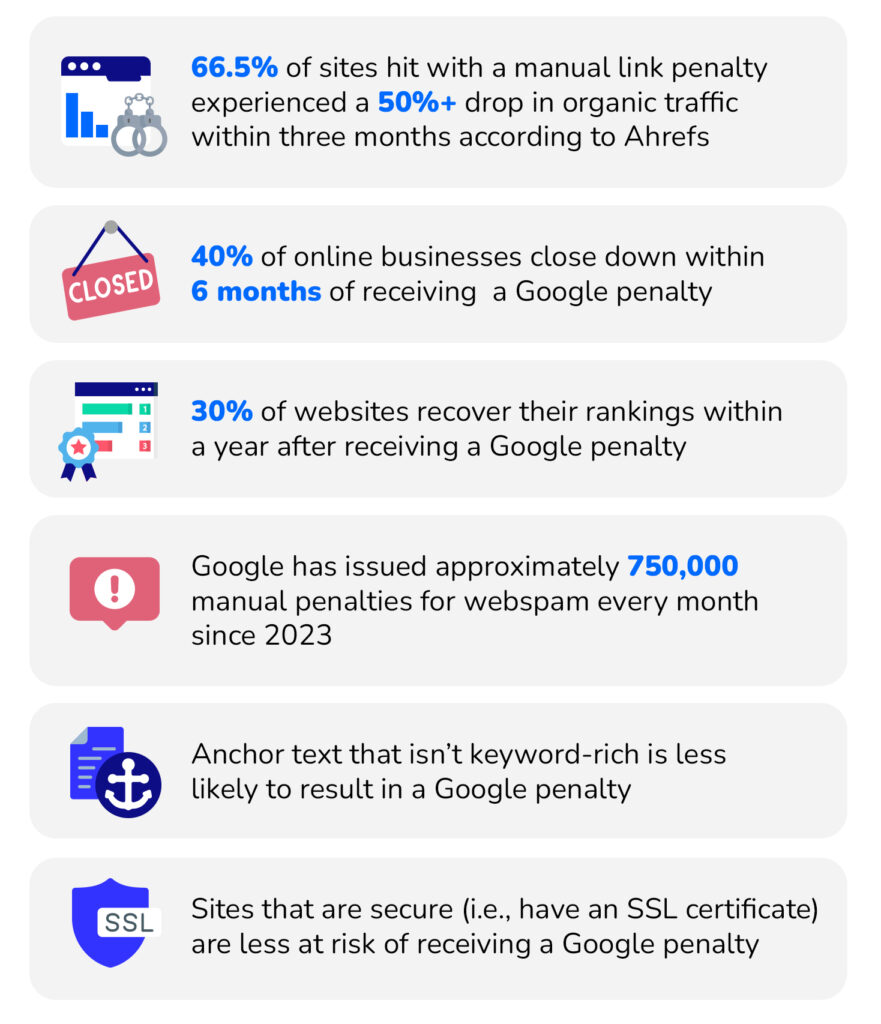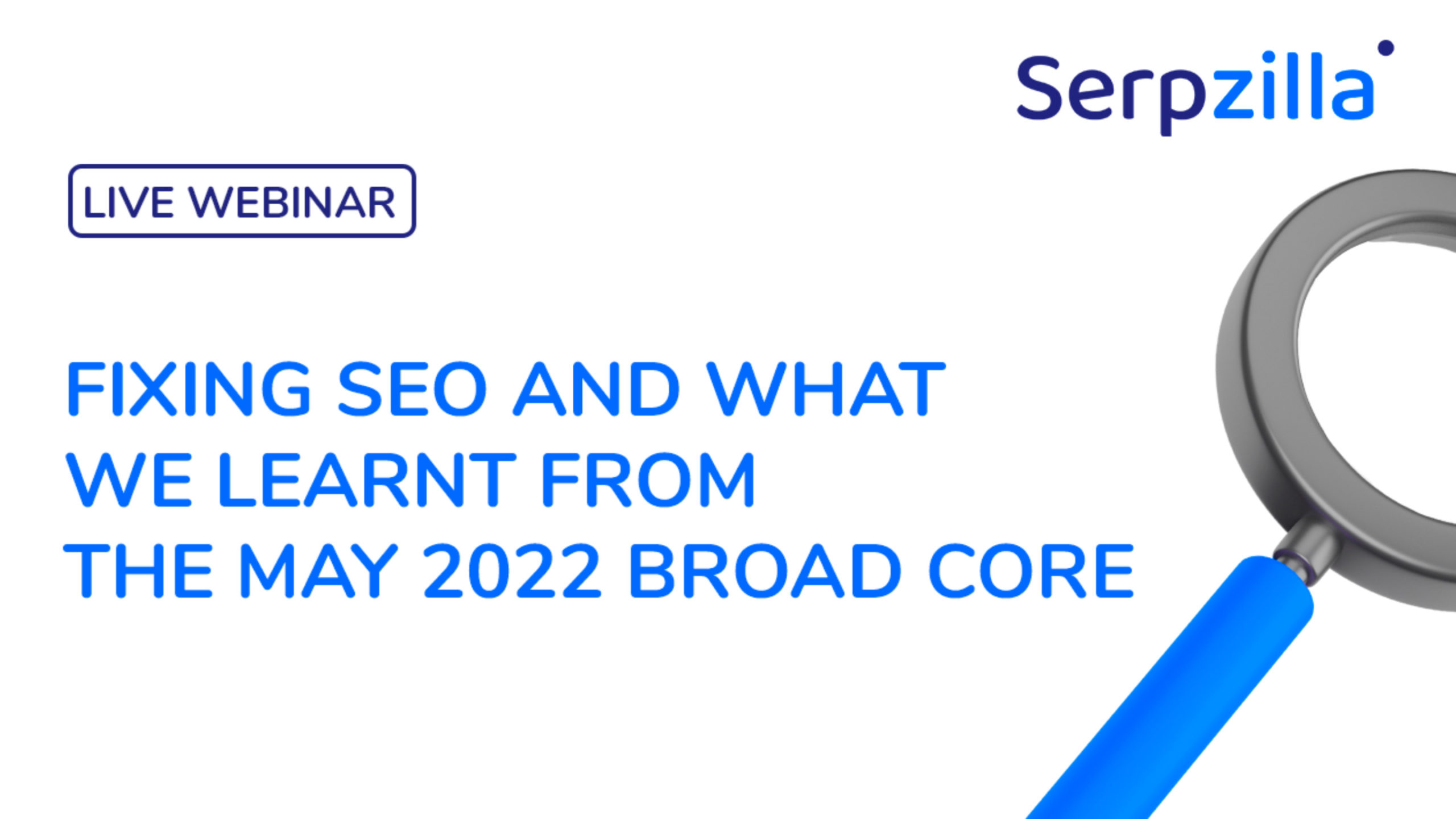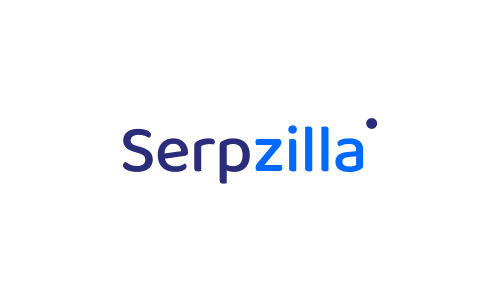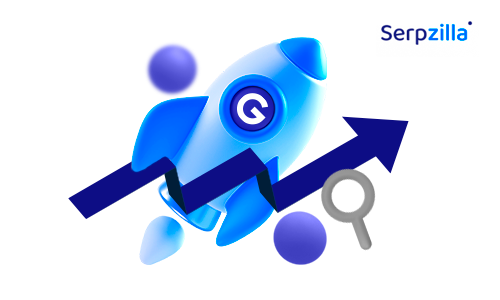If you are a webmaster or a website owner, you have surely thought of a lucrative way to monetize your website traffic and authority. After all, you have worked hard to earn your place in your industry and the loyalty of your following.
If you have already achieved said audience loyalty, website authority and are a notable player in your niche, you surely invested in your own backlink profile. You earned or bought links to your website that boosted it in SERP. And now, you can get on the other end of the process: you can start selling links from your website.
Selling backlinks is a solid method for website traffic monetization. But done wrong, it can also result in severe Google penalties. It can tank your site’s rankings or even remove it from search results entirely.
In this article, we will look into the hows, whats, and whys of selling backlinks from your site without putting your own resource or the ones you link to at risk.
Google’s Backlink Policy
First things first, let’s talk about why safety is even an issue in this process.
Google’s stance on backlinks is clear: any link intended to manipulate PageRank or a site’s ranking in Google search results may be considered part of a link scheme and a violation of Google’s Webmaster Guidelines.
What Triggers a Penalty?
Google’s arsenal is pretty diverse. Here are several examples of algorithms it uses to detect and penalize manipulated backlinks:
- SpamBrain: An AI-based spam prevention system. In 2022, it was updated to identify both buying and selling of links intended to manipulate rankings. In 2024, it saw an update that now allows it to detect link-buying/selling behavior more effectively. This includes patterns across networks and low-context paid links that don’t reflect real editorial judgment.
- Link Spam Updates: Major updates in 2021 and 2022 targeted low-quality backlinks and unnatural link patterns, especially those from sponsored content and guest posts without proper labeling.
- Manual Actions: Google can manually review your site and issue penalties if they find clear evidence of link schemes.
These have been in place for quite some time and SEO marketers have an arsenal of their own to avoid being slapped with these penalties. But there are a few more subtle and more recent Google algorithm updates in place that you have to consider. These updates give more weight to your website’s influence in your business domain over your information coverage.
- Google’s Helpful Content System (2022, refined in 2023–2024). This system prioritizes content written by people, for people. It downranks content created primarily to manipulate search engines — including sites overloaded with paid or irrelevant backlinks.
- March 2024 Core Update – The “Big Reset”. This one deindexed low-value sites en masse (especially AI-generated and monetized content hubs). It also prioritized content with unique expertise and authority, often authored by known individuals or brands.
As you can see, selling links from your site and doing it so that it is both safe and profitable has become quite a challenge.
Safe Strategies for Selling Backlinks
The above doesn’t mean that there is no safe and legit way to monetize your traffic via selling links. To stay under Google’s radar, you need to be strategic, selective, and transparent. You need to play it clean.
1. Choose the Right Link Type: Dofollow vs. Nofollow vs. Sponsored
- Dofollow: Passes link juice but is the riskiest if used excessively or sold without discretion.
- Nofollow: Tells Google not to pass link equity. Safer, especially when linking to commercial pages. Is still in demand because it can drive targeted referral traffic.
- Sponsored: Required for all paid links. Google expects transparency. Use rel=”sponsored” on all obviously paid placements.
2. Keep Link Volume in Check
- Avoid excessive outbound links. A general rule is no more than 2–3 external links per post. Is there such a thing as a balance of inbound and outbound links?
The answer is no. If Google ever used to look at the ratio between outbound and inbound, it doesn’t now as the algorithms got way too sophisticated. Inbound links are something you cannot control anyways. Outbound links should make sense to your user. Sometimes only 3-4 make sense. For some content pieces, it could be 300. - Homepage links can be your bestseller but keep in mind that if your outbounds are only homepage, Google can see it as a bad sign. Offer engaging content regularly so that you can spread link placements across your site.
- Multiple links from the same page should make sense. If you randomly place links to resources that have little logical connection between themselves, it’s a bad practice.
3. Build and Maintain Your Own Link Profile
- A healthy inbound link profile makes your outbound links look less suspicious and more coveted. Always keep in mind how things in SEO can turn head over heels in a matter of days. If you want to offer value, you have to maintain it.
- Don’t only sell links — balance with guest posting, citations, and organic backlinks to your own content. Work on your influence and prioritize it over your coverage. The more weight you have, the safer for you to sell links and the more value you can offer.
4. Delegate to Trusted Platforms like Serpzilla
Selling links directly to clients or via manual outreach is risky. Platforms like Serpzilla provide:
- Quality checks on buyers and sellers.
- Filters for link placement type that make sure that you as a referring domain and your link placement are perfectly matched in terms of relevance, quality and logical sense.
- Smart pricing recommendations based on domain metrics (DR, traffic, etc.) and demand. This can save you a ton of time searching for prospects. If you fill out your profile with enough details, Serpzilla’s AI will have enough information to display your offer to relevant buyers.
- Option to set link duration and auto-remove expired ones. Serpzilla works with multiple link placement options such as renting, niche edits, guest posts, and others.
Fact: 12,000+ verified webmasters on Serpzilla sell backlinks safely through content placements, homepage links, and guest posts.
Case Studies: Real Examples of Backlink Sales
Now, let’s take a look at how backlink selling can work in practice. Here are several anonymized examples from real webmasters who use platforms like Serpzilla. These examples illustrate different site types, backlink strategies, and earnings potential.
🧑💻 Case 1: Niche Blog in the Travel Industry
- Domain Rating (DR): 45
- Monthly Traffic: ~18,000 visits
- Type of Links Sold: Contextual dofollow links within evergreen blog posts
- Placement Strategy: No more than 2 paid links per post, only to travel-related businesses
- Monthly Sales: 12–15 backlinks
- Earnings: ~$600–$850/month
💡 Strategy tip: The owner refreshes older content monthly, adding new paid links only when they enhance the article’s value. They also pedal evergreen content such as recommendations for travel routes, personal impression posts, travel tips and insights. They often do unpackings of travel-related products and recommendation lists which allow for multiple link placements.
🧑🏭 Case 2: B2B Industrial Tech Review Site
- Domain Rating (DR): 59
- Monthly Traffic: ~40,000
- Niche: Reviews of industrial IoT devices, automation software, and factory sensors
- Link Types Sold: Contextual dofollow and sponsored links within high-authority review content and technical comparison articles
- Link Placement Strategy:
- Limited to 1–2 commercial links per page
- Sold only to vetted B2B providers (MES systems, procurement platforms, industrial analytics tools)
- Preference given to long-form evergreen content with ~2,000+ words
- Limited to 1–2 commercial links per page
- Monthly Backlink Sales: ~20–25
- Estimated Monthly Revenue: ~$1,800–$2,200
A rather unusual case of high DA and low traffic. Usually, if buyers see such high DA and such low traffic it is a red flag. The site could have been recently penalized. The DA could have been from previous authority, but the traffic is non organic.
However, this DA/traffic ration is very typical of narrow niche sites with limited search volume. The DA may be high because of backlinks from high-rated industry white papers or government tech grant reports, for instance. It could be 10+ years old, with evergreen guides or product specs that many technical blogs link to over time.
Although the site doesn’t attract massive consumer traffic, it ranks for high-intent long-tail B2B queries like “best predictive maintenance sensors for oil refineries” or “industrial PLC vs DCS systems.”
Visitors include plant managers, industrial engineers, and procurement officers. A great audience quality-over-quantity example: it is a perfect audience for B2B SaaS, automation platforms, and high-ticket equipment resellers.
🏠 Case 3: Regional Real Estate Portal (Midwest, USA)
- Domain Rating (DR): 37
- Monthly Traffic: ~50,000+
- Niche: Local residential real estate listings and neighborhood guides for several major counties in a Midwestern state
- Link Types Sold:
- Homepage dofollow links to local service providers
- Contextual backlinks in blog articles and market trend reports
- Homepage dofollow links to local service providers
- Link Sales Channel:
- Listings sold via Serpzilla’s marketplace
- Occasional direct sales to vetted partners (e.g. home loan providers, insurance agents)
- Listings sold via Serpzilla’s marketplace
- Monthly Backlink Sales: 8–12
- Monthly Revenue from Links: ~$300–$500
The website only links to businesses and services relevant to homeowners, buyers, or real estate professionals. Moreover, they are keen on local SEO and all of their backlinks are geographically tailored or refer to businesses that do country-wide delivery.
Their placements on the homepage or “Top Local Services” sidebar get consistent traffic and offer strong visibility.
Backlinks are often featured in community guides like “Moving to [City]?” or “Best Property Tax Tools in [County],” boosting both click-throughs and perceived editorial value.
💡 Strategy tip: compliance practices that allow the website to make good placement offers despite having the DA in the lower segment:
- Paid links are tagged with rel=”sponsored” or nofollow depending on agreement
- Outbound links are manually reviewed and limited to 1–2 per article
- The site also earns natural links from local news outlets and chambers of commerce, balancing its link profile
How to Avoid Google Penalties When Selling Links

Selling links isn’t inherently dangerous — if done thoughtfully. But here’s what to absolutely avoid to protect your rankings:
❌ Don’t Overuse Sitewide Links (Especially in Footers/Sidebars)
Google sees excessive, unrelated sitewide links as the hallmark of spammy behavior.
🛑 Risk: Algorithmic demotion or manual action — especially if you’re linking to unrelated or low-quality sites.
❌ Don’t Overdo Exact-Match Anchors
Using the same keyword-rich anchor text repeatedly, especially for commercial terms, is a major red flag.
✅ Safer practice: Use brand names or generic anchors like “this resource” or “learn more.”
❌ Don’t Link to Irrelevant or Shady Niches
Be extra careful when placing backlinks to a high-risk site (e.g. gambling, crypto, adult) if it’s not directly related to the piece of content where you place it or to your niche in general. A single backlink like this can harm your site’s trustworthiness if there’s no evident relevance.
✅ Safer practice: Stick to industries closely aligned with your own content theme.
❌ Don’t Neglect Link Attribution
Always label paid links clearly. Use rel=”sponsored” or at least nofollow.
✅ Safer practice: Platforms like Serpzilla automate this tagging or let buyers choose the tag type.
❌ Don’t Let Link Sales Define Your Site
If most of your content is made to host links or if the majority of your outbound links are paid, Google might see your site as a “link farm.”
✅ Safer practice: Create high-quality, evergreen content. Link to unpaid, reputable sources regularly
Key Takeaways
- Selling backlinks can be a valuable revenue stream — if done correctly.
With the right approach, you can monetize your website’s authority without risking penalties or damaging your reputation. - Google’s algorithms are now smarter than ever.
Updates like SpamBrain, Helpful Content, and the March 2024 Core Update mean Google can detect not only link patterns but also assess your influence and editorial integrity. - The safest links are relevant, clearly attributed, and naturally embedded.
Use rel=”sponsored” or nofollow where appropriate, and only link to businesses and resources that make sense within your content. - Avoid risky behaviors like overusing dofollow sitewide links, using exact-match anchor text, or linking to irrelevant or shady niches.
These are all signals that can trigger algorithmic or manual penalties. - Build and maintain your own link profile.
A strong, organic backlink portfolio gives your site authority and makes your outbound links more valuable and less suspicious. - Niche sites with limited traffic but high domain authority can still sell links effectively.
As long as they have a trusted audience and relevant content, buyers will value the targeted exposure. - Trusted platforms like Serpzilla help you stay compliant.
They offer buyer/seller vetting, support all backlink types in one tool, relevance-based filtering, and automatic pricing based on demand and site characteristics — making it easier to manage safe and profitable link sales. - Always prioritize value and editorial sense over short-term profit.
Selling backlinks should enhance your content, not dilute it. Think long-term: credibility attracts better buyers and protects your rankings.








